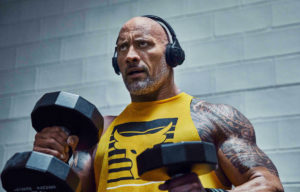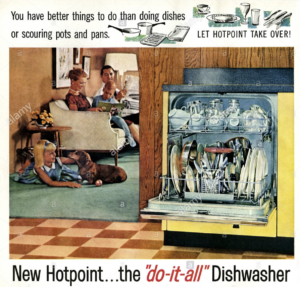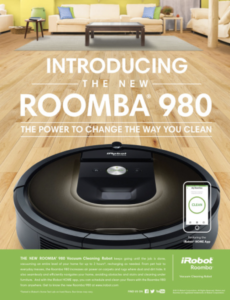Editor’s Note: This topic was chosen in partnership with classmate, Lauren Nickerson. She will be writing about the opposing side of this issue. I would strongly encourage you to read her blog post. Having varying viewpoints on important topics is an integral part of the communication process.
Many brands have attempting to buy in on the #MeToo movement. Trademarks for cosmetics and wearables sprang up not long after the campaign (Orso, 2018). There is a #MeToo-branded wine in Napa Valley, a clothier in Manhattan, and a social mobile application.
#MeToo topped twitter feeds in hours; the rebrand of an 11-year-old campaign to raise awareness of sexual attacks on women of color (Zarkov & Davis, 2018). It has since exposed an industry that silenced victims and protected perpetrators (Johnson & Hawbaker, 2018). It continues to unmask attackers sector by sector. It’s given rise to the so-called Weinstein effect. That effect is firings, criminal charges, and/or firms looking to shield themselves from the fallout. What’s important is that people, women especially, are talking about sexual violence. And we are seeing how prevalent it is.
Today, many firms have begun to see #MeToo claims as serious material risks (Crabb, 2018). Firms took a deep dive into their sexual harassment policies. More than that, they have begun including Weinstein Clauses in contracts, especially in acquisitions. Apart from the financials, bidding firms want to know what #MeToo precautions are in place at the company. They want full disclosure of any allegations made against executives in the last five years. The same term as the statute of limitations for rape in the third degree, and pivotal to Weinstein’s defense (Ransom, 2018).
#MeToo is more than victim accounts. By Twitter’s estimates, there were 1.7 million #MeToo tweets in less than ten days after Alyssa Milano’s 2017 use of the hashtag, which followed Ashley Judd’s revelation. We’re beginning to see accountability. But there is a difference between social change, and the administrative change that make movements stick (Zarkov & Davis, 2018).
In response to allegations made against former CBS CEO, Les Moonves, the company added three women to its executive board (Levick, 2018). To make hay of #MeToo, political candidates are disclosing survivors without their permission in campaign literature (Vitali, 2018). Some firms are seeing a wave of ill-advice, essentially advising all men and women not to interact with one another (Hendrix, Silverman, & Fisher, 2018). There is fear that now that sexual violence has gone mainstream, that it has will be mistaken for change (Zarkov & Davis, 2018). The necessary practical changes may not happen (Hendrix et al, 2018). And tone def responses can exacerbate the underlying issue. Branding #MeToo can easily fall into this trap.
Much of #MeToo has been contextualized by the social locations of the perpetrator and victim. Powerful men are attacking young, attractive women (Zarkov & Davis, 2018). This is not the norm. Outside the Hollywood-industry, Williams and Lebsock (2018) show how pervasive the culture of harassment is. It’s an everyday occurrence affecting both genders. They both have a stake in ending harassment.
If #MeToo has shown a company anything, it is that it’s highly likely sexual harassment is happening within their ranks. Whether it’s institutional, industry wide, from the boardroom to the production floor. It’s lurking in an organization’s culture. Being a part of the conversation is noble. But can you say the underlying policies of the organization are more than just overly-cautious and confusing policies to both men and women? Or, were three women added to a board, and they called it a day. Is your message self-serving window dressing (Aitkenhead, 2018; Orso, 2018)? If you can’t answer these questions, it’s likely internal testing of your #MeToo message, won’t uncover it. The message, the organization, and the brand may very well be the #MeToo movement’s next moment. You may diminish what gains have been made.
References
Aitkenhead, D. (2018, October 7). The magazine interview: Rose McGowan, the actress who exposed Harvey Weinstein, on why Hollywood’s approach to #MeToo is a lie. The Sunday Times. Retrieved from https://www.thetimes.co.uk/article/the-magazine-interview-rosemcgowan-the-actress-who-exposed-harvey-weinstein-on-why-metoo-is-a-lie-9rt33kr0n
Crabb, J. (2018). Rise of ‘Weinstein clauses’ to shield parties during deal-making. International Financial Law Review, Retrieved from http://libproxy.usc.edu/login?url=https://search-proquest-com.libproxy2.usc.edu/docview/2101140288?accountid=14749
Hendrix, S., Silverman, E., & Fisher, M. (2018, January 28). #MeToo has a ‘chilling effect’ on workplace camaraderie. Chicago Tribune. Retrieved from http://www.chicagotribune.com/business/ct-metoo-workplace-camaraderie-20180128-story.html
Johnson, C.A., & Hawbaker, K.T. (2018, October 11). #MeToo: A timeline of events. Chicago Tribune. Retrieved from http://www.chicagotribune.com/lifestyles/ct-me-too-timeline-20171208-htmlstory.html
Levick, R. (2018, September 17). #MeToo after Moonves: What should companies be doing?. Forbes. Retrieved from https://www.forbes.com/sites/richardlevick/2018/09/17/metoo-after-moonves-what-should-companies-be-doing/#1249947c2100
Orso, A. (2018, February 20). Brands trying to make a buck off of #MeToo. The Philadelphia Inquirer. Retrieved from http://www2.philly.com/philly/news/brands-public-relations-me-too-marketing-20180220.html
Ransom, J. (2018, September 21). 5 Ways Harvey Weinstein’s lawyers plan to fight the accusations against him. New York Times. Retrieved from https://www.nytimes.com/2018/09/21/nyregion/weinstein-sexual-assault-defense.html
Vitali, A. (2018, October 16). Sen. Heidi Heitkamp apologizes for identifying sex assault survivors without permission in campaign ad. NBC News. Retrieved from https://www.nbcnews.com/politics/politics-news/sen-heidi-heitkamp-apologizes-identifying-sex-assault-survivors-without-permission-n920886
Williams, J.C., & Lebsock, S. (2018). Now What? Harvard Business Review. Retrieved from https://hbr.org/cover-story/2018/01/now-what.
Zarkov, D., & Davis, K. (2018). Ambiguities and dilemmas around #MeToo: #ForHow Long and #WhereTo? European Journal of Women’s Studies., 25(1), 3–9. https://doi.org/10.1177/1350506817749436












